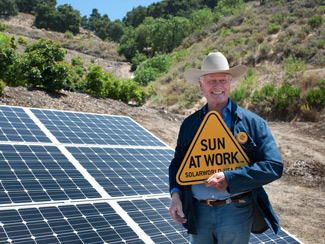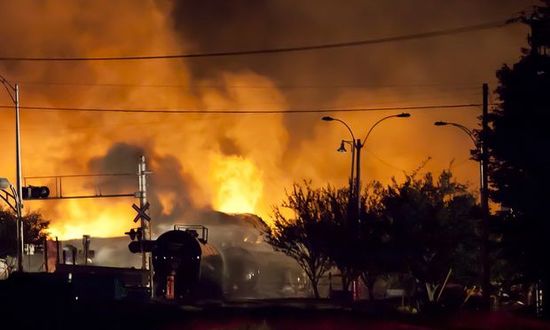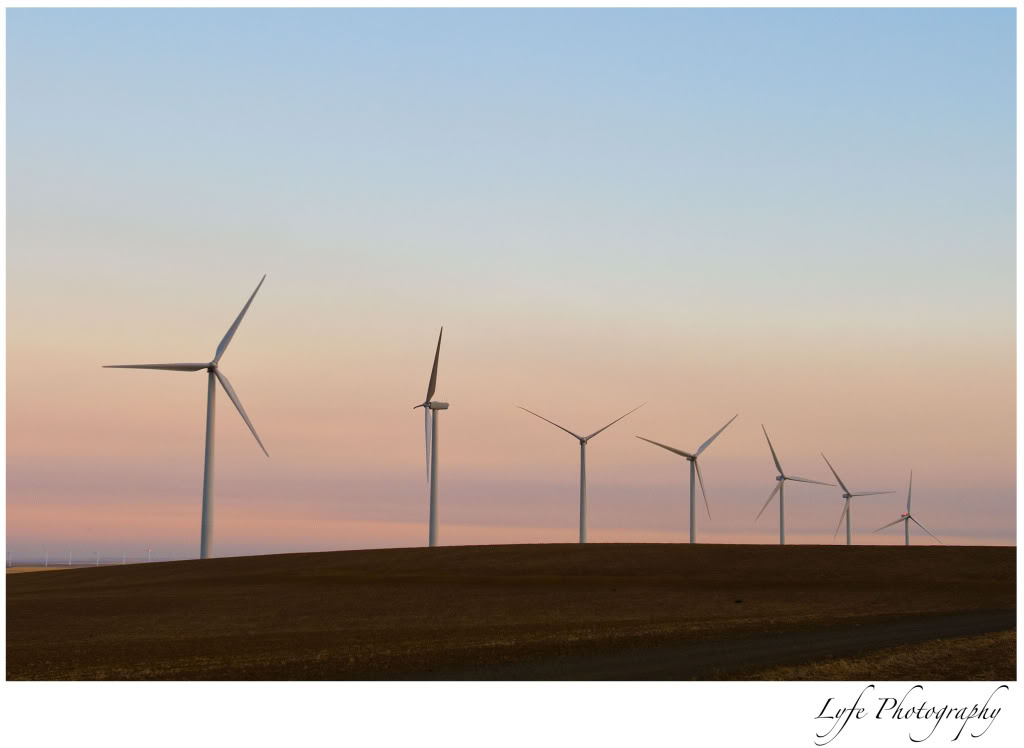 A concept that has been percolating into debates over the feasibility or desirability of moving to an all-renewables, no/low carbon energy supply system is the ceiling on what percentage share of our total energy supply we can take from variable renewables. At The Energy Collective, in the second of a two part May 2015 series on Wind and Solar energy, Jesse Jenkins looked at the question of Is There An Upper Limit To Variable Renewables?. Now, as the Sunday Train has covered many times, there is an upper limit, and so an all-renewable no/low carbon energy system requires dispatchable renewables as well as variable renewables ... and all cost-optimizing models of all-renewable energy systems that I have seen confirm this.
A concept that has been percolating into debates over the feasibility or desirability of moving to an all-renewables, no/low carbon energy supply system is the ceiling on what percentage share of our total energy supply we can take from variable renewables. At The Energy Collective, in the second of a two part May 2015 series on Wind and Solar energy, Jesse Jenkins looked at the question of Is There An Upper Limit To Variable Renewables?. Now, as the Sunday Train has covered many times, there is an upper limit, and so an all-renewable no/low carbon energy system requires dispatchable renewables as well as variable renewables ... and all cost-optimizing models of all-renewable energy systems that I have seen confirm this.
However, Jesse Jenkins proceeded to mis-characterize the policy question at hand, when he wrote:
First, as a growing body of scholarship concludes, the marginal value of variable renewable energy to the grid declines as the penetration rises.
Indeed, where renewable energy earns its keep in the energy market — and is not supported outside the market by feed-in tariffs — the revenues wind or solar earn in electricity markets decline steadily as their market share grows.
Well, not so fast. There is a fundamental flaw in the assumptions behind this claim. It turns out that kind of market situations that allow market prices to measure a resource's "ability to earn its keep" quite clearly exclude this particular situation he is talking about.
So it makes a difference how markets are put together, which is what this week's Sunday Train takes a look at.
Wait, Isn't Any Market Basically the Same Kind of Thing
The remark above is treating "markets", as a generic thing, as the magic measuring sticks for whether something is "earning its keep". And this is of course nonsense. "Markets in general" is a concept with weight in the folktales we tell ourselves about the economy and value, but in a reality-based discussion it is a meaningless term, devoid of content.
Markets are social institutions, based on the regular rules of behavior (that is, the regular ways that people actually behave, not the ways they "ought to" behave), and whenever we are building a real world system with regularities of human behavior, we are building with crooked timber.
While the general idea of the limits on the share of renewable energy is valid, the particular limits that Jesse is seeing are artificially low. They are artifacts of the ways that markets originally designed and built for fossil-fueled energy supply systems work when variable renewables are introduced. These are markets that, in fact, will refuse to pay for some variable renewables that are in fact earning their keep.
The good news is that if f we design new market rules that give appropriate weight to the value of variable renewables, then we can built markets that will, in fact, reward variable renewables that earn their keep ... and, indeed, reward the complementary dispatchable renewables that would be needed to round out an all-renewable energy system.
"Breaking News: Status Quo Systems Reinforce the Status Quo. Film at 11" (pt. 1)
Consider a wind turbine. It has installation costs. It has operating costs. It has maintenance costs. And it has no fuel costs. The installation cost does not change based on how much energy is actually delivered to the grid. And, for wind turbines, the operating and maintenance costs are almost completely independent of the amount of energy delivered to the grid. The "marginal cost" of energy from a wind farm is close enough to zero that if we round to the closest tenth of a percent, its normally 0.0%.
Now, in a spot market for electricity, natural gas generators drop out if they cannot cover the cost of natural gas fuel. Coal generators drop out if they cannot cover the cost of coal fuel. But wind farms can always cover the cost of the wind that is blowing past. So if they are generating, it always makes sense for them to accept a spot price, no matter how low the spot price is.
So, suppose that you have wind farms with a Capacity Factor of 40%. That means that on average they deliver 40% of the maximum generating capacity of all of the wind turbines. But suppose that sometimes they deliver 100%.
Once you have 40% of your energy coming from wind turbines, then at the times they are delivering the largest amount of energy ... the competitive market price for that energy is close to $0.00.
It is, however, a trained incapacity if you think that $0.00 is the price that represents the wind turbines "earning their keep". This comes from a conclusion of economic theory that the market price under a long list of assumptions if an effective measure of the economy value of a produced commodity.
But someone would only apply that conclusion to this situation if they don't understand the logic behind the conclusion.
What is "value"? Bring a Classical Marxist, a Catholic Theologian, and a Phenomenological Philosopher into the discussion of what is value, and your typical mainstream economist will quickly become either frustrated or entirely baffled by the direction that the discussion takes. What a mainstream economist thinks value is (and some may have to refer back to their notes from grad school coursework to refresh themselves on things they have been taking for granted for a while) is a price that people are willing and able to pay.
However, different people are willing and able to pay different prices, so the relevant economic value that she or he will point to for real commodities is the price that people are willing and able to pay that covers the full opportunity cost of producing the largest feasible amount.
 What is opportunity cost? That is what it was necessary to give up to have the commodity. This is a far broader concept than Dollar cost. For example, if some herbicide results in children of mothers exposed during pregnancy being born without eyes ... that tragic side-effect is part of the opportunity cost of the commodity, whether or not the herbicide manufacturer is ever required to pay anything in compensation.
What is opportunity cost? That is what it was necessary to give up to have the commodity. This is a far broader concept than Dollar cost. For example, if some herbicide results in children of mothers exposed during pregnancy being born without eyes ... that tragic side-effect is part of the opportunity cost of the commodity, whether or not the herbicide manufacturer is ever required to pay anything in compensation.
Now, under a particular set of assumptions, you can describe a market where the market price tends, over the long term, to either be at, or to be tending toward, the economic value of the item being produced.
But the way you get there is by constructing a scenario where the market price tends toward the average cost of production, while also considering a scenario where all opportunity costs are imposed on either the buyer or the seller.
And, by direct, real world observation, the markets that Jesse is talking about do not qualify, because:
- Fossil fuel generators of power impose massive opportunity costs from increased risk of catastrophic climate change, so their producer cost is a much smaller share of total opportunity cost than for wind turbines or solar PV panels; and
- A price of about $0.00 is far below the average cost of production required to cover the installation, maintenance and operating costs of wind farms and solar farms, so if the market is frequently paying these a market price of about $0.00, it can't be the kind of market that tends to cover the average cost of production.
To see why 100% variable renewables makes spot markets break down at measuring opportunity cost of renewable energy, suppose that there was only 99% of market demand available from renewable electricity. Then the cheapest fueled generator available would set the spot market price.
In reality, the actual economic value of that last 1% of power includes the fact that we do not need to consume the fuel from the fueled energy source. So the real economic value of the 100% renewables is an incremental amount larger than the value of 99% renewables. Indeed, if that 1% is from a fossil fueled generator, actual economic value of that 1% additional variable renewables is substantially greater than the market price at 99% renewables, because of the massive subsidy in not paying the cost of CO2 emissions.
Under the current market design, the market value of 100% variable renewables in a spot market is massively less than the market value of 99% renewables.
Under the current spot market design, the more often we are at 100% renewables, the better off the economy is, and the worse off the variable renewables are.
Physical Laws Are Not Subject to Amendment by Legislature ~ But Social Laws Are (pt 1)
 So, at 99% variable renewables, a normal spot electricity market rewards variable renewables for the cost of the fuel they are saving the economy, and at 100% variable renewables, a normal spot electricity market refuses to do so.
So, at 99% variable renewables, a normal spot electricity market rewards variable renewables for the cost of the fuel they are saving the economy, and at 100% variable renewables, a normal spot electricity market refuses to do so.
The simplest fix is straightforward: spot electricity markets must take non-dispatchable variable renewables (or other qualifying no/low carbon electricity) offered at or below market price for up to 99% of electricity demand, and may not take more. When more than 99% is offered at or below market price, the market takes the same percentage from each amount offered.
Now, this adjustment makes sense because it is rational to sometimes "overproduce" by 10% of current demand if that is the effective way to satisfy current demand. Therefore when variable renewable suppliers are generating a surplus over current demand, it makes sense to reward them for the part of their supply that is being demanded, instead of building the market system to require them to supply it for next to nothing.
However, doing this means that it will be more common for there to be a surplus. And the more common a surplus of variable renewables is, the more cost-effective it becomes to (1) store it for use during periods that harvest is less than current demand and (2) develop demands that can be shifted to take advantage of the surplus.
And this calls for a new market, which is in some respects the mirror image of the market for reserve supply: markets for dispatchable demands.
So, the grid operator knows the portfolio of variable renewables that are bidding into the day ahead electricity markets. They know their day-ahead offers, they know their total capacity if they happen to be operating flat-out, and they know, from their previous history, the probability of how much they will be offering in the hour ahead markets during that day. They also know the probability of various levels of demand in their system in the day ahead.
The largest amount of "surplus" power is the gap between committed demand in the regular electricity markets and the smallest of maximum yield from all variable renewables and the maximum power than the operator can transmit. Any generation in excess of the operator's ability to transmit it must, of course, be curtailed, and does not count as part of the actually available surplus.
So for a three hour period, the operator can estimate how much surplus variable renewables will be available with 50%+ likelihood (Tier 1), how much with 25%-50% likelihood (Tier 2), and how much with 5%-25% likelihood (Tier 3). Each buyer bids a commitment to take power, and the maximum rate at which they will take up, and the dispatchable demand price is the highest price that clears the estimated surplus supply, with the price that was bid determining priority of access to the surplus power.
Now, when the market for dispatchable demand opens up, the amount of dispatchable demand available may not be very extensive. That means that quite often the market clearing price will be the minimum allowed bid. The minimum allowable bid is set based on a grid operators charge for marketing and transmission services, which is retained by the grid operator.
Now, this means that the surplus will start out being sold for a very low price. And this is, of course, part of the point: it provides a strong incentive to develop the means to take advantage of the surplus.
As the market for dispatchable demands matures, the market clearing bids in the dispatchable demands market will begin to rise above the minimum bid, and the dispatchable demands market will start to deliver additional revenue to the variable renewables generators. At the margin, it will lead to some increment in additional investment in variable renewables, which will lead to an increase in supply in the dispatchable demand markets.
Which, at the market level, is mirroring what we already know at the system level. The more storage and dispatchable demand is available in the system, the more variable renewables can be added to the system before hitting the limit of how much renewable energy can be accommodated.
But, more than that, the concept of system operators running markets for dispatchable demands points to one of the ways that we can help encourage people to put that storage and dispatchable demands in place.
Conclusions and Conversations
So, what do you think? Does delving into this topic give you greater confidence that we can make the no/low carbon energy transition that we must make, to survive as a national society and national economy? Or does it shake your confidence?
Or would you go about it some other way?
As always, the Sunday Train is not finished when the introductory essay is posted ... that is just the start of the conversation. Feel free to respond on this topic, or on another other topic of sustainable transport and the sustainable energy needed to power it. (Though if you are making a point on another topic, a nod to that fact might help me avoid trying to read it through the filter of the topic of the essay).
And thanks for riding the Sunday{+} Train!
{+ Disclaimer: Sunday in some parts of the United States when some version of the Sunday Train is first posted. Cross-posts may sometimes require that you adopt a Sunday frame of mind on some other day of the week.}